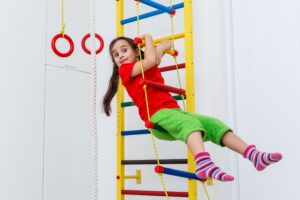
Summer is here, and for many parents, that means extra time with their children at home. For children with autism spectrum disorder receiving ABA therapy, participating in fun, structured activities offer fun opportunities to practice and learn social skills through incidental teaching.
What Is Incidental Teaching?
Incidental teaching is a teaching procedure where the specific arrangement of the natural environment promotes the development of skills and encourages the emergence of untaught skills. This then fosters the generalization of skills both taught and untaught over time. For example, a therapist may use a child’s favorite movie character to make a lesson more relevant to the client.
Why Is Incidental Teaching Important?
For parents, caregivers, and teachers, implementing incidental teaching is low cost because the tools and materials are already present in the natural environment. Research outlining the benefits of incidental teaching is nearly endless and dates back to the late 1970s.
Since then, researchers have focused on the benefits and components of incidental teaching that are most effective. These include:
-
An increased chance of skill generalization
-
Naturally occurring cues that help learners adapt to future situations
-
An increase in the unprompted use of learned skills and independence
-
A higher response rate due to motivating features and objects/activities found in the natural environment
Why Is it Important for Parents and ABA Caregivers to be Fluent in Incidental Teaching?
Caregivers play a vital role in ABA therapy and the progress clients achieve, including teaching or modeling new behaviors at home and managing problem behaviors. Research has shown that caregivers who are new to ABA or that have limited experience are capable of learning and implementing incidental teaching in their own homes. In situations when children and clients spend a good amount of time with parents in the home, there is an opportunity to learn skills naturally.
To learn more about how ABA therapy works at Applied ABC, click here.
Getting Ready for ABA Summer Activities
Before beginning these activities, it’s important to set up an environment where items can be displayed and chosen through a form of communication (sign, verbal, AAC device, pointing).
Research from Betty Hart and Todd R. Risley found that children engaged with more objects when they were available through initiation and interactions with adults or other children compared to freely available objects.
Three ABA Summer Activities That Promote Incidental Teaching
An Indoor Obstacle Course
On a rainy day, an indoor obstacle course is a great way to use up old party supplies (you can also purchase some streamers at your local dollar store). This is a great opportunity to communicate with a child with ASD about the choice of location, materials, and the ways to go through the obstacle course (army crawl, standing on your toes, or imitation).
If there are siblings, family, or friends at the house, encourage children to try copying each other’s behavior, practice taking turns, and comment on the activity that is occurring. For older children, this activity could be turned into a game to practice keeping score of how many successful run-throughs the child can do, counting, and even working on sportsmanship by making positive statements to those playing.
The Target Game
When the weather is sunny, grab some chalk and some fun items to create a constructive learning environment that promotes natural learning. Depending on the learner, they can be involved in gathering all the materials to create the game and play, choosing the colors of the circles for an adult to draw, or making the circles and numbers themselves.
This game is another opportunity to target turn-taking; counting; keeping score; learning to lose (if it happens naturally); identifying shapes, colors, and numbers; and communicating to peers or adults. And don’t stress if you don’t have bean bags – try rolling or bouncing balls, jumping into a circle, pushing toy cars for the game, or throwing some water balloons to cool down when the day heats up.
 Making Snack Crafts
Making Snack Crafts
Making snack crafts is a great way to use incidental teaching to encourage skill acquisition and can be as simple or involved as the learner prefers. This is also a great way to get children involved with cooking, using new kitchen tools, and maybe even trying some new foods.
Making a trail mix with children’s favorite snacks or treats can help motivate functional communication. Children can also be involved with reading a recipe, counting or measuring ingredients, stirring, or asking an adult for help. Once completed, children can enjoy their very own recipe!
An excellent resource for more snack-craft ideas can be found on Pinterest. For at-home summer activities inspiration, check out this Pinterest account. This board consists of hundreds of ideas for summer activities where incidental teaching can be applied with items commonly found at home.
Incidental teaching is best used by arranging the environment to naturally target skills based on the learner. These activities can be easily changed depending on the age of the participant. During these activities, take some time to model expectations and narrate what is happening in the environment. When any activity is completed, involve the child in the cleanup process.
Do you have a child who has been diagnosed with autism spectrum disorder and are in need of ABA therapy services? Click here to fill out an autism therapy assessment form today!
Sources Cited
Hart, Betty & Risley, Todd. Promoting productive language through incidental teaching. Education and Urban Society
Hsieh, H. H., Wilder, D. A., & Abellon, Elizabeth. The Effects of Training on Caregiver Implementation of Incidental Teaching.
McGee, G.G. Incidental Teaching Research: Early Beginnings Through Recent Innovations



 Making Snack Crafts
Making Snack Crafts

